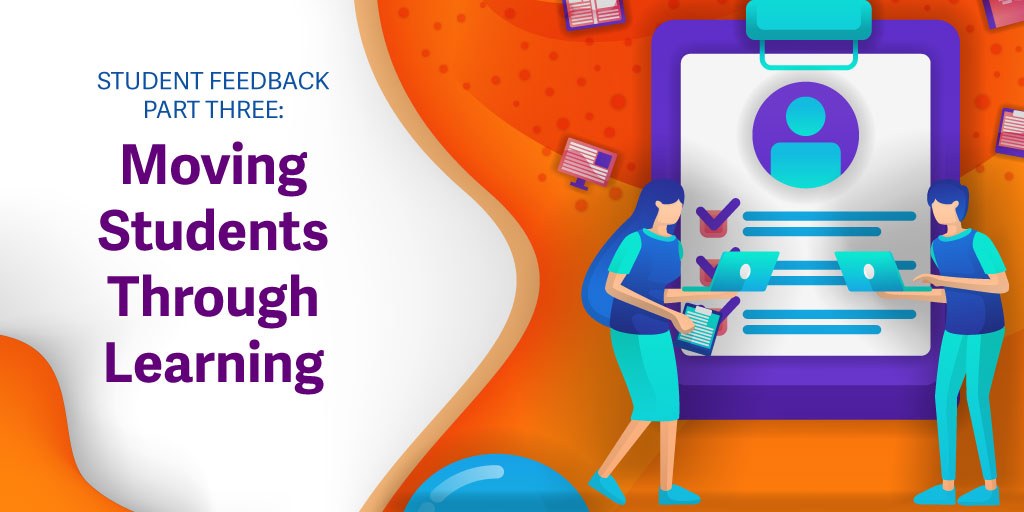
So far in our feedback series, we’ve discussed general types of student feedback as well as best practices for feedback in the classroom. In thinking about how feedback shapes a classroom, I have changed my understanding of what quality feedback really means. It is much more than responses to students, and it is even more than comments back to them when correcting their work. It is a response to learning moments that move students deeper into their learning.
This insight, for me, came from John Hattie’s Visible Learning research. If we use this research as the gold standard of what we need to do more of in classrooms, feedback is at the top of the list. It is actually number eight when it comes to instructional teaching strategies and number 32 of all of the 252 items that were researched. For this article, it is important to remember that a .4 effect size is an average year of growth for an average classroom. We will focus primarily on the strategies that exceed this.
Hattie gives us an effective size of .7 when it comes to teacher feedback, but he also provides a great deal of detail about this area in his Visible Learning book—much more than many of the other highly effective instructional strategies that his research supports. This is partially because of the large amount of research that is out there about feedback, but it also speaks to the importance of understanding it fully as a teacher.
Feedback for Learning
As we think about feedback as an instructional tool, we look at it differently than we have in the past—at least I did. We now see it as a way to help students learn, and if it doesn’t do that, it probably isn’t very impactful. Telling a student, “Great job!” does very little for learning, although it can help the student in motivation and self-esteem.
If a teacher sees that feedback is critical to ensure learning, there are three avenues for planning feedback in everyday instruction. This is a brief summary and a better, more detailed description can be found in the Visible Learning books:
Feed up: Teachers and students need to have clear learning objectives in order to make progress. The first kind of feedback is feeding up, or getting the students ready to learn the material. This includes teacher clarity on the focus of the learning (which is a .75 effect size), activating students’ prior knowledge about the topic (a .93 effect size), and quickly assessing student’s prior abilities on the topic (a .95 effect size). All of this will focus on the lesson, the learning, and thinking about the topic at hand.
Feed back: As students are learning, typically during the guided practice or independent work portions of the lesson, the teacher has the opportunity to provide feedback about the learning. This helps students in many ways. Feedback keeps students on the right learning path if they happen to wander, but it also can move a student down the learning path more quickly or more deeply. The teacher’s quality feedback assists students in thinking about their thinking as they learn.
Feed forward: Students need to know where they are going and why. In a classroom, this looks like a teacher using feedback to preview the next stage of learning. By linking the pieces of the bigger picture together, the teacher helps the students to make connections and create relevance.
Interestingly, as teachers use these concepts of feedback to plan their lessons, instructional design becomes a natural byproduct. There should be a natural progress—a continuum of learning—that is logical for students to work through. Skills and concepts should build on one another. As teachers work through the loop of feeding up, feeding back, feeding forward, and then feeding up again, they will see how important the progression is. Teachers who work though this method multiple times will begin to adjust the order of what they do.
What does this look like for teachers? I would suggest that these three types of feedback be included as part of every lesson plan that is written. In the end, much of this isn’t new to teachers—this type of lesson design has been around for years. Looking through the lens of feedback, for me at least, focused me on the learning of the students and not just the instruction at hand. Lesson planning revolving around feedback always revolves around if, how, and when the students are learning. The teacher giving the feedback is not the key—the teacher receiving the feedback from the students, and then responding to it, is the real key.
Did you miss the first or second posts in this series? Be sure to check them out to learn more about student feedback. And to keep up with teaching tips and education trends all year long, subscribe to the Educator blog today!





